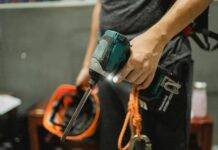
10 Workplace Safety Rules That Will Keep Your Job Safe
Introduction
Safety in the workplace isn’t just a box to check off—it’s crucial for your well-being and job security. Adhering to safety rules can prevent accidents, improve productivity, and create a healthier work environment. Let’s dive into ten essential workplace safety rules that will keep your job safe.
Rule #1: Wear Appropriate Personal Protective Equipment (PPE)
Personal Protective Equipment (PPE) includes items like helmets, gloves, goggles, and ear protection. Wearing PPE is crucial because it provides a barrier against potential hazards. Imagine going into battle without armor; that’s what working without PPE is like. Always ensure you’re equipped with the necessary gear before starting any task.
Rule #2: Follow the Company’s Safety Procedures
Every company has safety procedures tailored to its specific work environment. These guidelines are there for a reason—to protect you and your colleagues. Make it a habit to familiarize yourself with these procedures and stay updated on any changes. Non-compliance can lead to severe consequences, not just for you but for everyone around you.
Rule #3: Keep Your Workspace Clean and Organized
A cluttered workspace is an accident waiting to happen. Keeping your area clean and organized can prevent slips, trips, and falls. Plus, it makes you more efficient. Take a few minutes at the start and end of your day to tidy up. It’s a small effort that can make a big difference.
Rule #4: Report Unsafe Conditions Immediately
Spotting unsafe conditions is everyone’s responsibility. If you see something, say something. Reporting hazards promptly can prevent accidents and save lives. Don’t assume someone else will handle it; take the initiative and report it to your supervisor or safety officer.
Rule #5: Take Regular Breaks
Fatigue is a silent danger in many workplaces. It can slow your reaction time and impair your judgment. Taking regular breaks helps you stay alert and focused. Listen to your body and step away when you need to recharge. A well-rested worker is a safer worker.
Rule #6: Use Tools and Machines Properly
Tools and machines are designed for specific tasks and should be used accordingly. Misuse can lead to accidents and injuries. Make sure you’re trained on how to use equipment correctly and always follow the manufacturer’s guidelines. If something doesn’t seem right, don’t hesitate to ask for help.
Rule #7: Stay Aware of Your Surroundings
Situational awareness is key to preventing accidents. Stay alert and be mindful of your surroundings at all times. This means watching out for moving machinery, slippery surfaces, and other potential hazards. Being aware of what’s happening around you can help you avoid dangerous situations.
Rule #8: Follow Emergency Procedures
Knowing what to do in an emergency can make a critical difference. Familiarize yourself with your company’s emergency plans, including evacuation routes and procedures. Participate in regular drills so you’re prepared for any situation. In an emergency, every second counts, so being well-prepared is essential.
Rule #9: Communicate Effectively
Clear communication can prevent misunderstandings that lead to accidents. Use tools like radios, hand signals, and visual aids to ensure your message is understood. Don’t be afraid to ask questions if you’re unsure about something. Effective communication is a cornerstone of a safe workplace.
Rule #10: Participate in Safety Training Programs
Safety training isn’t a one-time event; it’s an ongoing process. Regular training sessions keep you informed about new safety practices and refresh your knowledge on existing ones. Encourage your colleagues to participate and foster a culture where safety is a shared responsibility.
Conclusion
Workplace safety is everyone’s responsibility. By following these ten rules, you can contribute to a safer, more productive work environment. Remember, safety isn’t just about protecting yourself; it’s about looking out for your colleagues too. Prioritize safety every day, and you’ll help create a workplace where everyone can thrive.
National Safety Stand-Down to Prevent Workplace Falls
Workplace Violence Prevention: Policies and Awareness
Hand and Finger Safety: Safeguarding Against Pinch Points and Lacerations
FAQs
What should I do if I see a safety hazard? Report it immediately to your supervisor or safety officer. Taking prompt action can prevent accidents and injuries.
How often should safety training be conducted? Safety training should be conducted regularly, at least once a year, with additional sessions as needed for new procedures or equipment.
What is the most important safety rule? All safety rules are important, but wearing appropriate PPE and staying aware of your surroundings are crucial for preventing most accidents.
How can I encourage my colleagues to follow safety rules? Lead by example, communicate the importance of safety, and participate in safety programs. Positive reinforcement and teamwork can also help.
What are the consequences of not following workplace safety rules? Consequences can range from minor injuries to severe accidents, legal penalties, and even loss of life. It can also affect job security and company reputation.
























